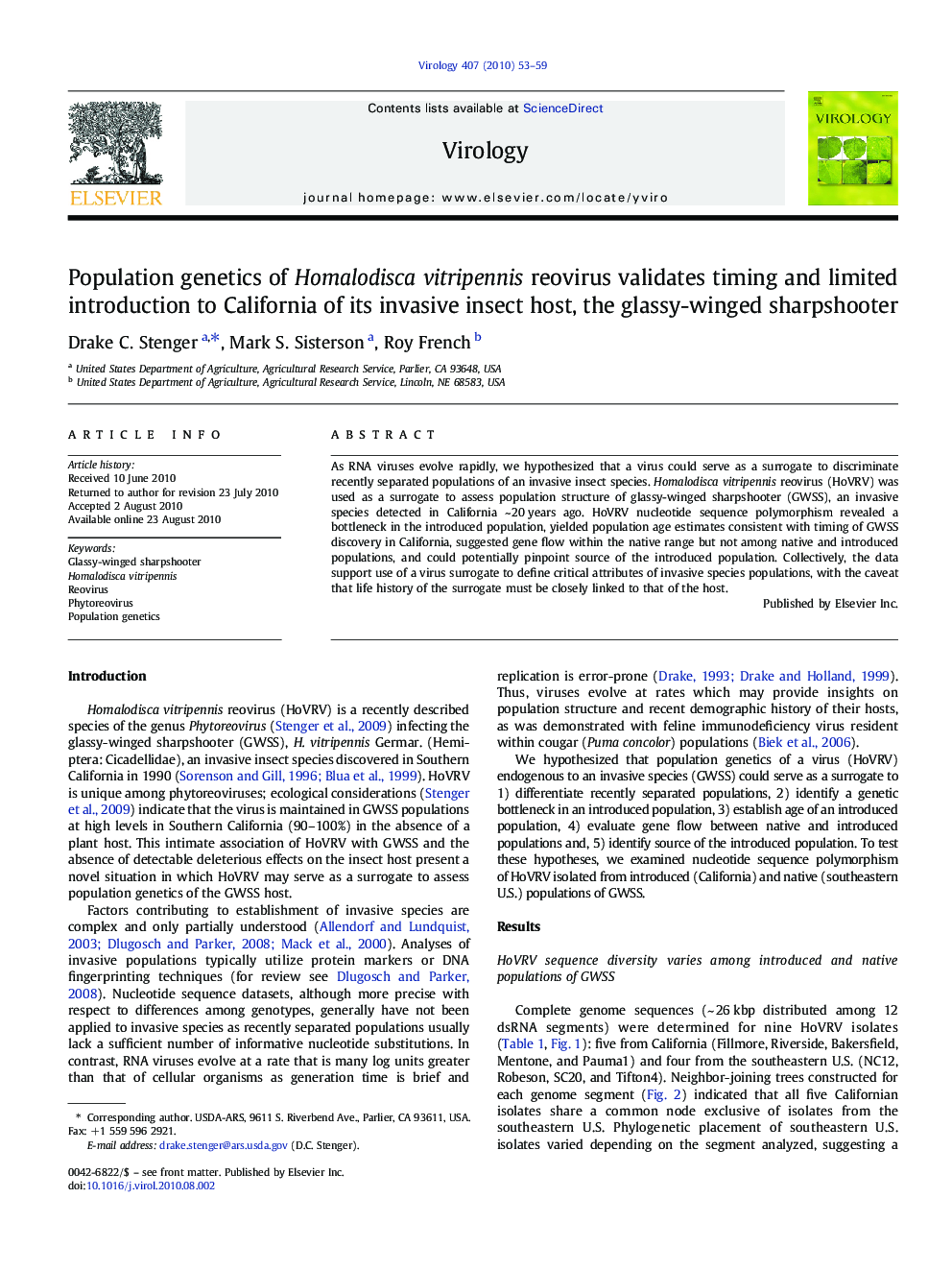| Article ID | Journal | Published Year | Pages | File Type |
|---|---|---|---|---|
| 3424862 | Virology | 2010 | 7 Pages |
As RNA viruses evolve rapidly, we hypothesized that a virus could serve as a surrogate to discriminate recently separated populations of an invasive insect species. Homalodisca vitripennis reovirus (HoVRV) was used as a surrogate to assess population structure of glassy-winged sharpshooter (GWSS), an invasive species detected in California ~ 20 years ago. HoVRV nucleotide sequence polymorphism revealed a bottleneck in the introduced population, yielded population age estimates consistent with timing of GWSS discovery in California, suggested gene flow within the native range but not among native and introduced populations, and could potentially pinpoint source of the introduced population. Collectively, the data support use of a virus surrogate to define critical attributes of invasive species populations, with the caveat that life history of the surrogate must be closely linked to that of the host.
